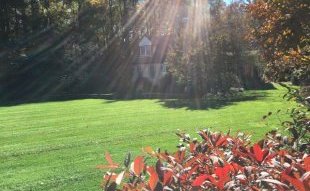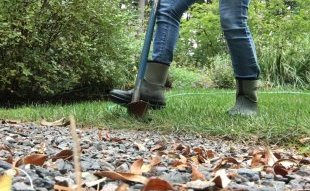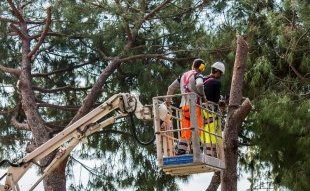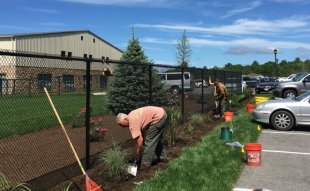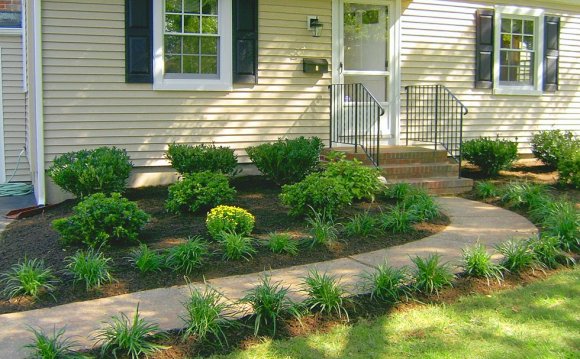
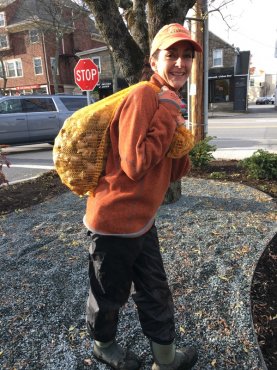 If you’re a flower person, you’ll do just about anything to extend the colorful season to enjoy plants in bloom and a riot of color in your gardens. Doing any work now may sound odd, seeing that this is the start of the gloomy season of late fall, when most plants have died back, skies are grey, and the hint of winter is in the air.
If you’re a flower person, you’ll do just about anything to extend the colorful season to enjoy plants in bloom and a riot of color in your gardens. Doing any work now may sound odd, seeing that this is the start of the gloomy season of late fall, when most plants have died back, skies are grey, and the hint of winter is in the air.
When most people think about the fall they think about dead leaves, diminishing light, and the inevitable appearance of old man winter. No person in their right mind would consider planting at this time of year, right? Wrong! Savvy gardeners know that autumn is the perfect time to make improvements to your garden by adding new plants as well as dividing larger existing plants and moving them about to add new life to your plant beds.
Topics:If you just love gardens with WOW-Factor, the season always seems to come to an end way too soon. Trees, shrubs, and perennials are traditional favorites for creating layers and lots of landscaping interest, but there can be a periodic lapse between flowerings that may cause things to go a little dull.
Topics: home landscape ideasMany homeowners don’t realize that fall is a critical time for lawns and gardens. Even though the summer bloom is off, bright colors are beginning to fade, and winter is just around the corner, fall is actually an important time to get your property ready for the next growing season.
Here are five helpful fall tasks that will save you time and money by tackling the right tasks at the right time using the right techniques:
If you’re a gardener or a homeowner with foundation beds, perennial beds or mixed planting borders, chances are you’re already familiar to some degree with the task of edging – the creation of a defining line between one landscape feature and another, such as a lawn and a garden.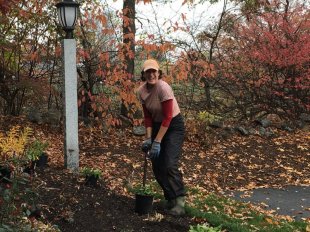 There is nothing quite like a beautifully cut edge that adds clear boundaries, definition, and neatness to a landscaped area.
There is nothing quite like a beautifully cut edge that adds clear boundaries, definition, and neatness to a landscaped area.
After much of New England lost its forests in the early 19th century to agricultural clearing, shipbuilding, and fuel gathering, the region has seen remarkable reforestation and now boasts a substantial forest-to-developed-landscape ratio in favor of forests. Today, many people don’t give too much thought to trees as a general resource that can benefit both property owners and the public.
Topics: Understand DEP RegulationsYou’re a commercial property owner or developer and you’ve just spent several months and a significant amount of money developing a landscape project to set your property and business apart from the competition, beautify the neighborhood, and win the hearts and minds of customers and community residents alike. The only problem is, the public isn’t as thrilled with your plans as you are.
Property owners undertaking landscaping projects adjacent to watershed resources or other public property without first making application to the local conservation commission often unwittingly run afoul of environmental regulations. Often the property owner is simply unaware of the rules and regulations governing land development in their community.
The lucky ones are those who may have not gone too far with their landscaping project, or who have done work (which may be “damage” in the eyes of the conservation agent or conservation commission), which can be undone or revised to meet by-laws and satisfy the agent or commission. The truly unfortunate ones are those who may have cut down trees that are viewed as vital to protecting water resources or some other environmentally sensitive feature. So how can you minimize and manage the damage you’ve done and still try to keep your landscaping project on track?
Topics: Understand DEP Regulations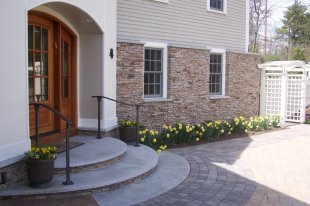 In Part I about weeding your garden like a pro, we discussed mindset and approach. Now, it’s time to demystify all those weeds. What are they all about anyway? I mean, why do they even show up in the first place?
In Part I about weeding your garden like a pro, we discussed mindset and approach. Now, it’s time to demystify all those weeds. What are they all about anyway? I mean, why do they even show up in the first place?
Some say a weed is any plant you don't want. And on some level that’s true. If you have a specific design – a garden expression - and an unplanned plant shows up, sure, you can call it a weed and pull it. But is it really a weed? Is a seedling from a maple tree or a Rose of Sharon a weed? Are the new little Black-eyed Susans or Verbena bonariensis blooming in the middle of the boxwood border really so bad?
Topics: Summer Garden InterestWhat is it about the task of removing unwanted plants from our garden that causes us to hate it so much? Weeding seems to be the one thing that can turn every gardener into a world-class complainer. Could it be that it is deeply dissatisfying drudgery? Or that it feels endless and soul-crushing? Oh, the dreaded task of weeding!
It seems like something we need to discuss.
First, if you’re a gardener at heart, I’ll bet I can improve your attitude and brighten your spirits if you'll just stick with me through this blog.
Let’s start by talking about two critical components to effective, positive weeding. The first is mindset. The second is approach. When you align the correct mindset with the right approach, weeding isn’t such a painful exercise.
To get into mindset, let's take a shallow dive into the topic of maintenance in general and attitudes toward it and be sure to watch the how-to-weed video below.
